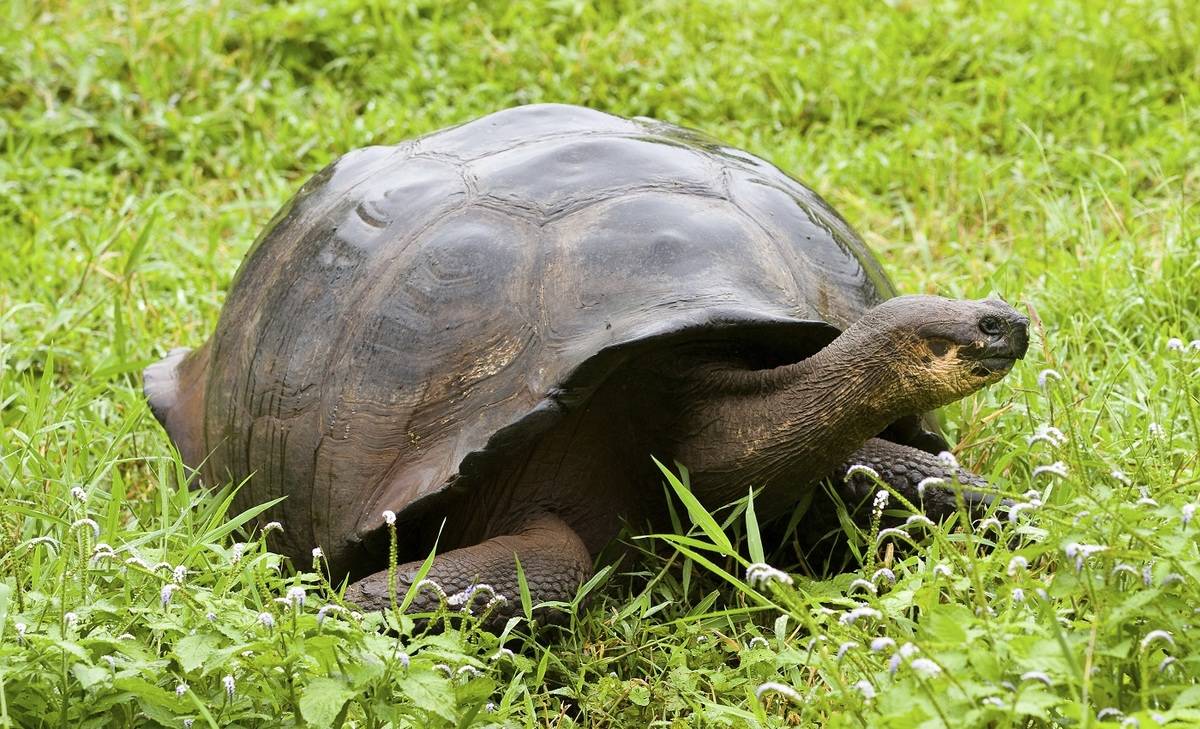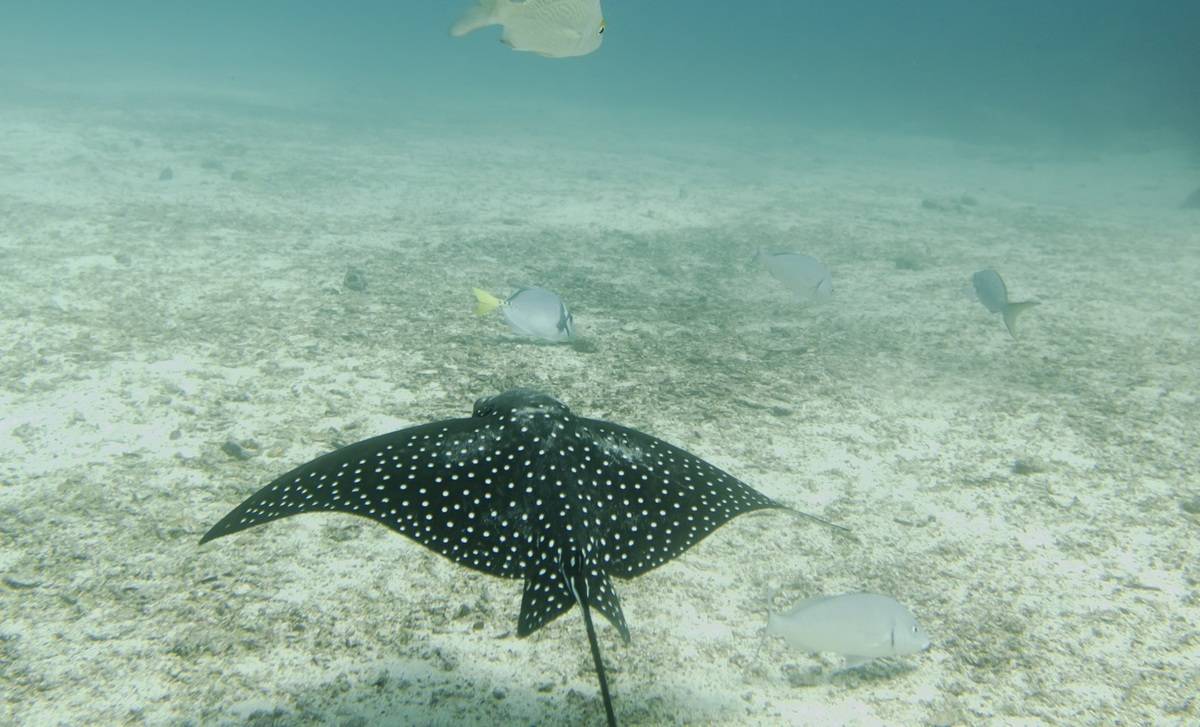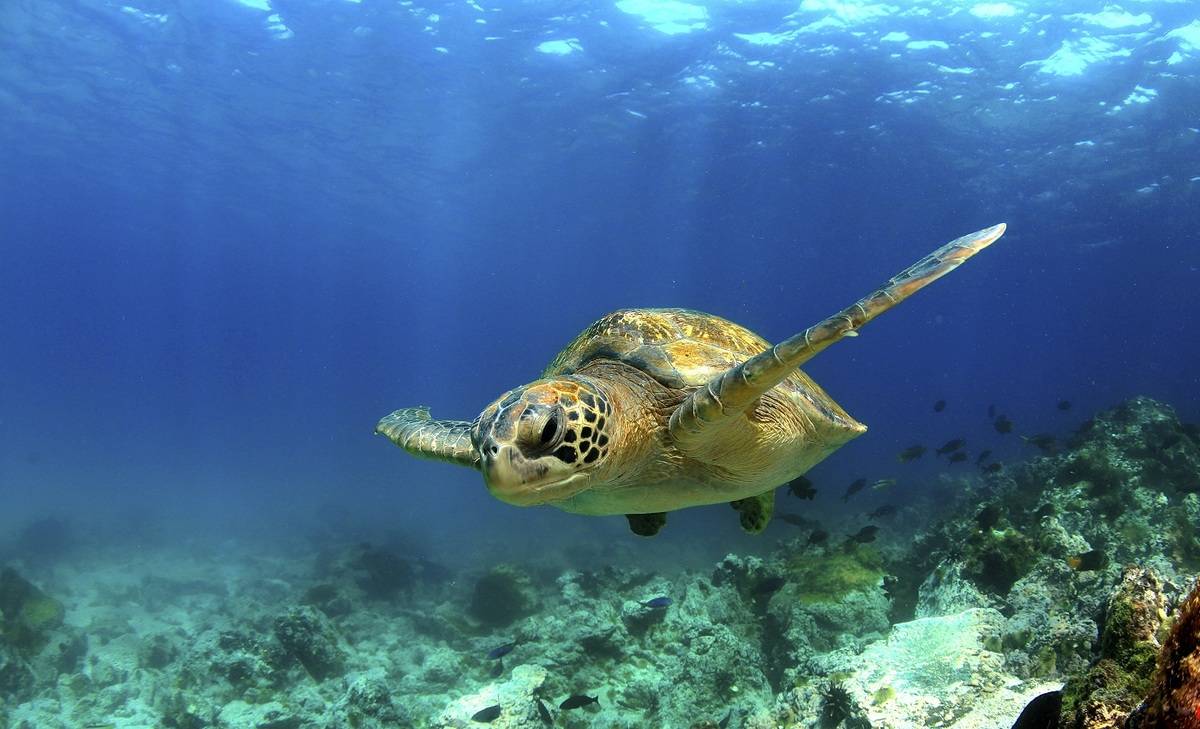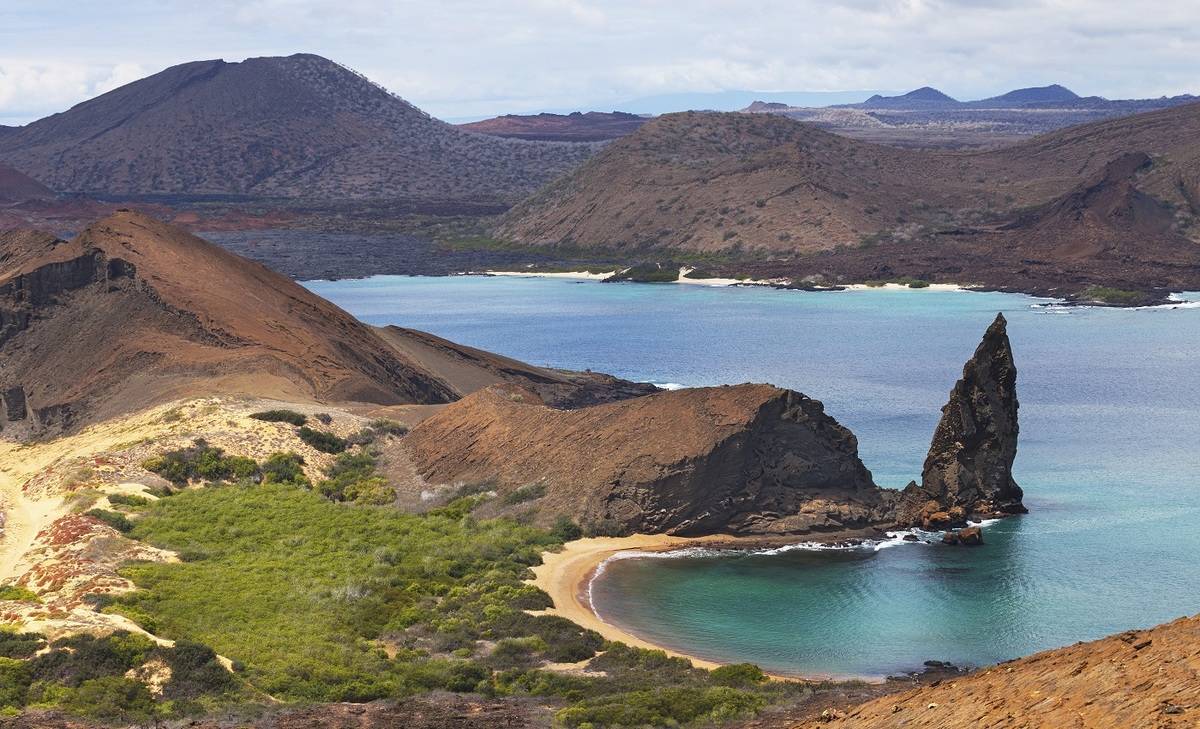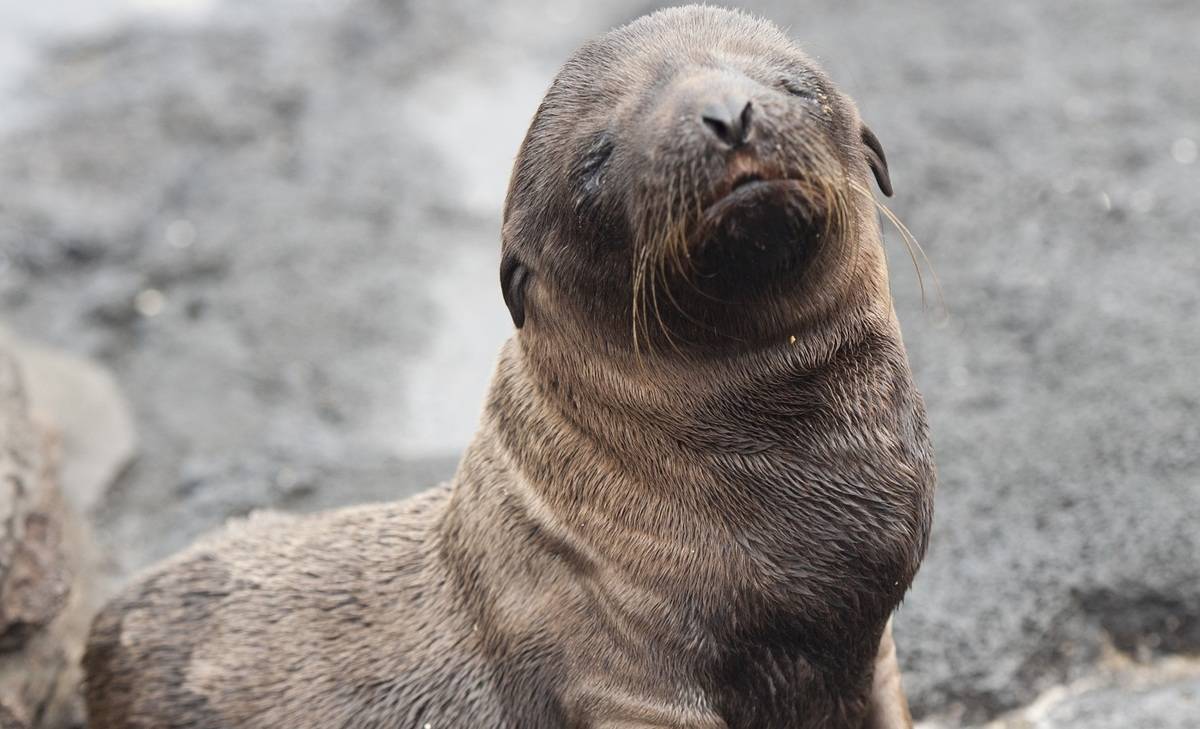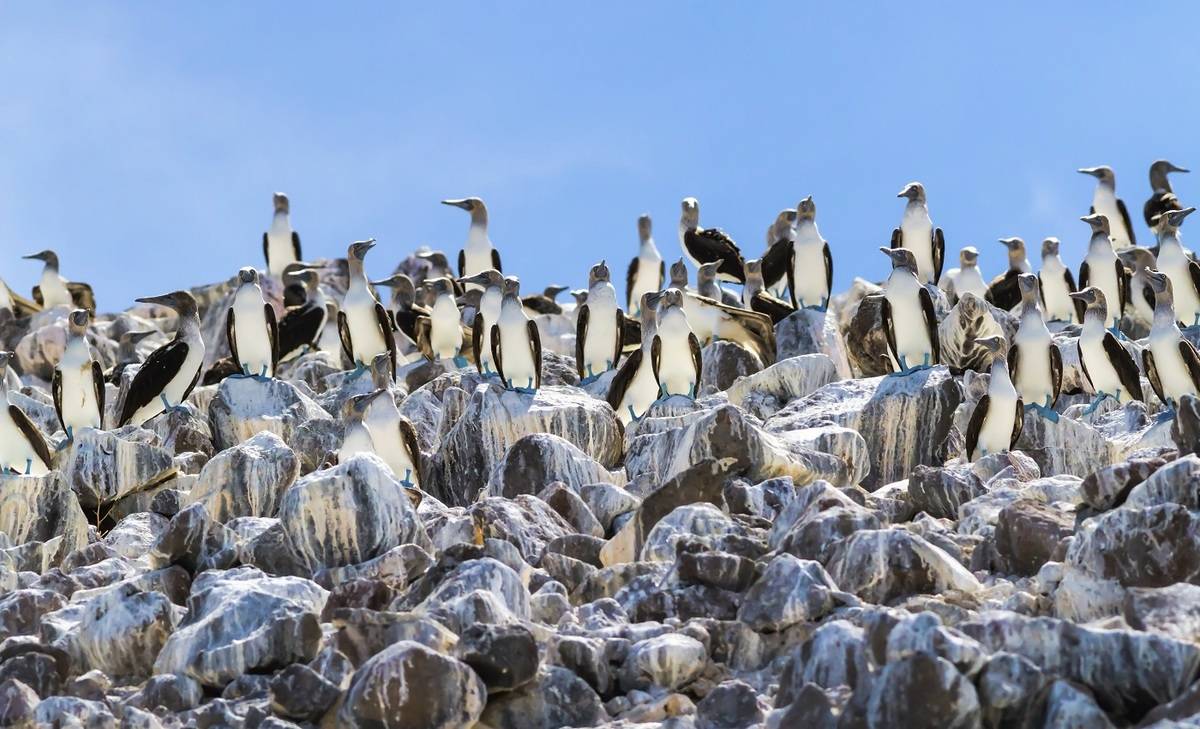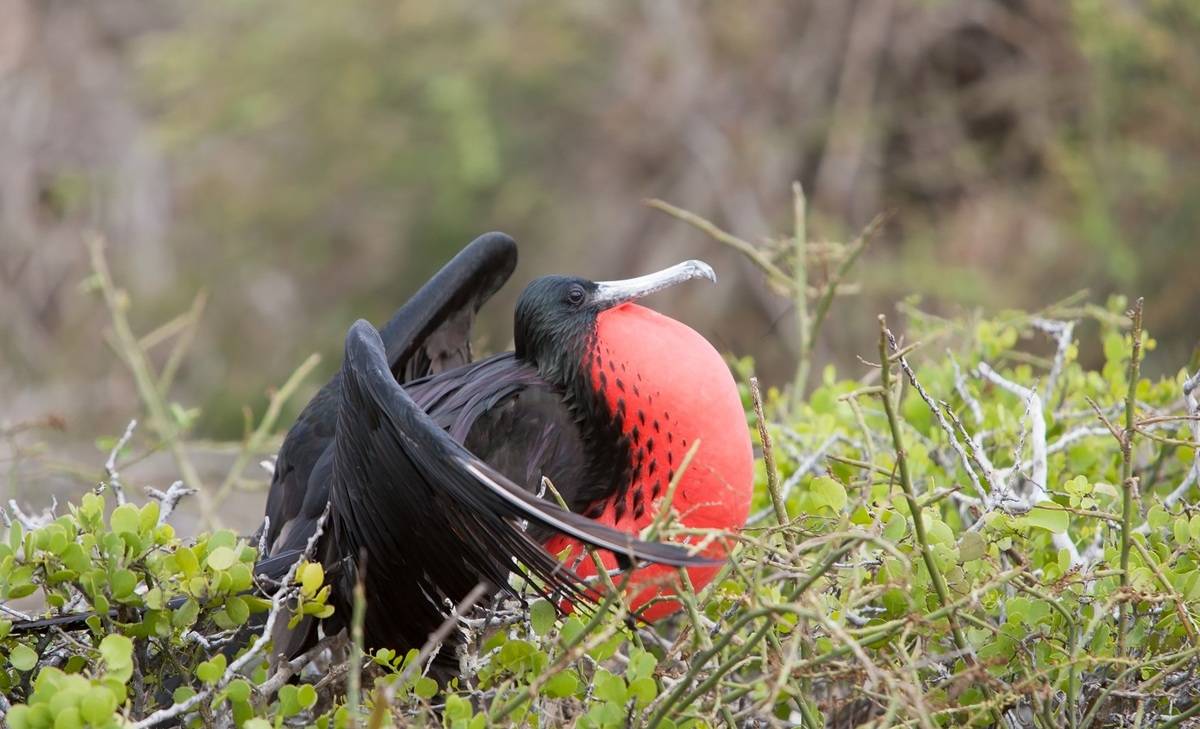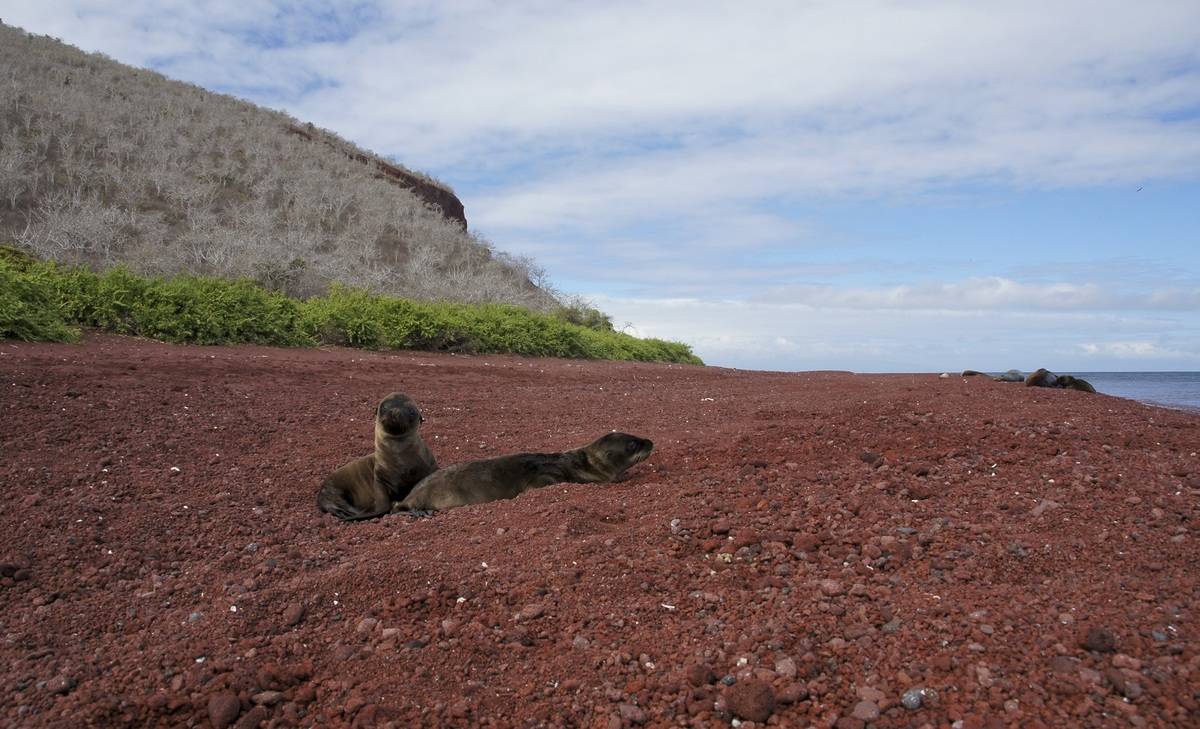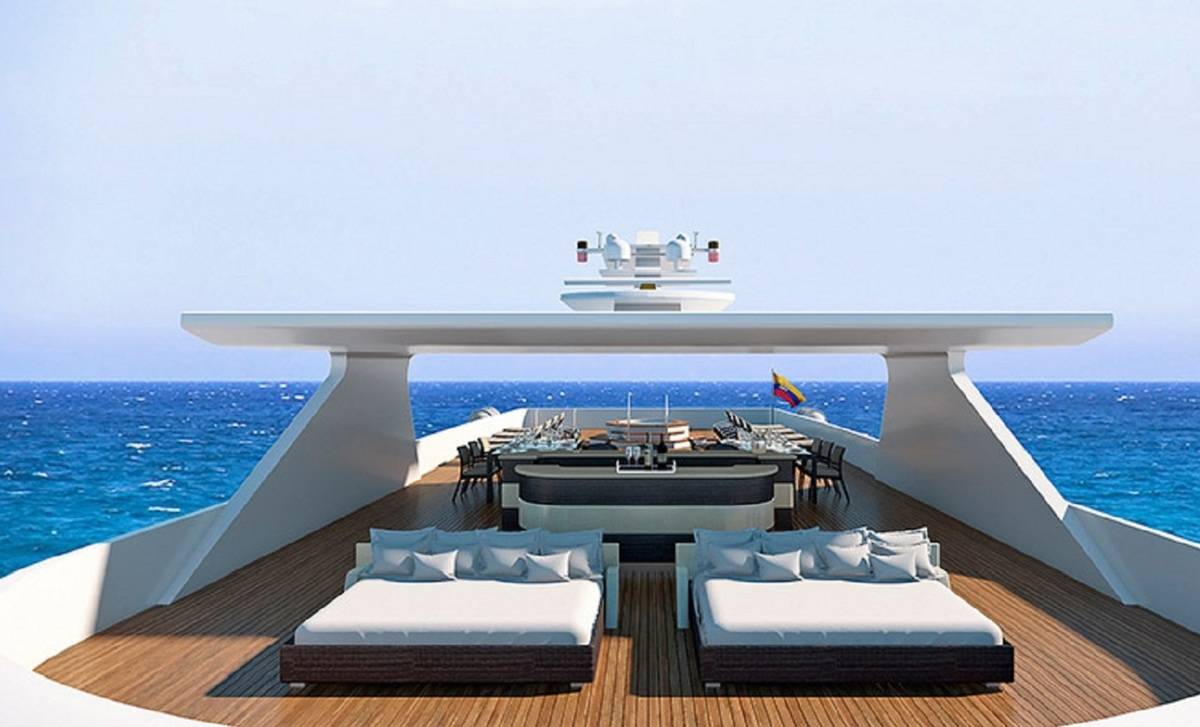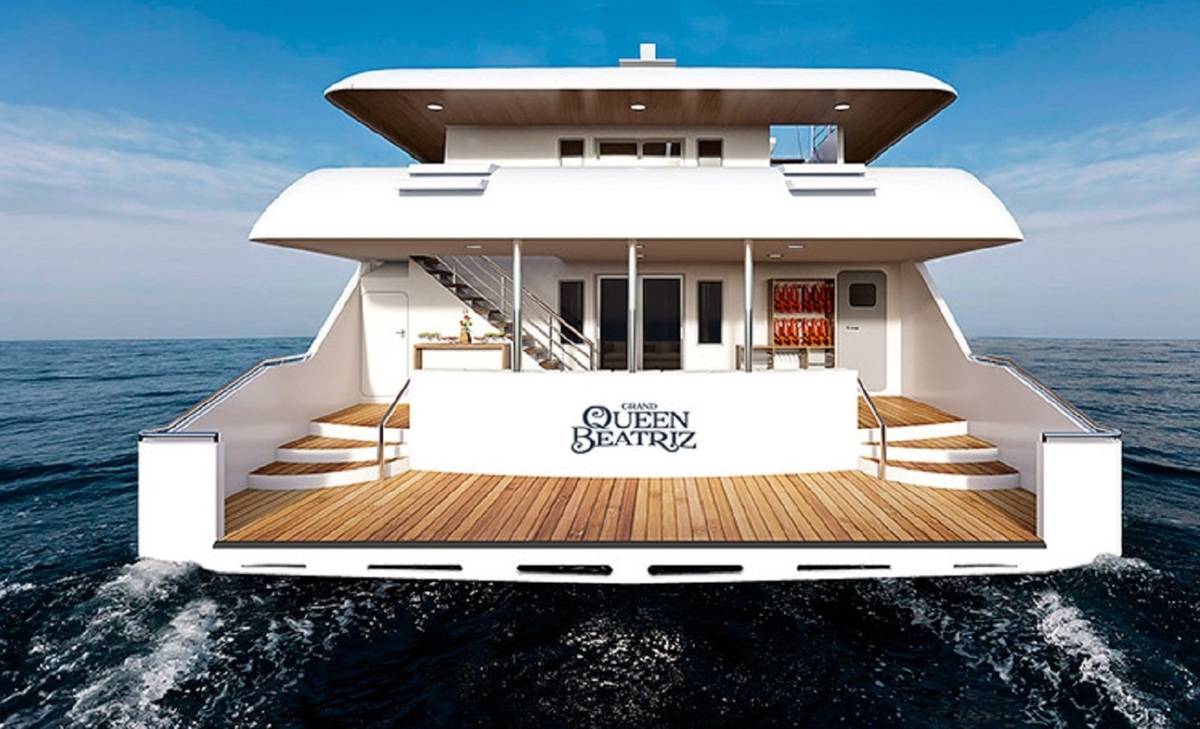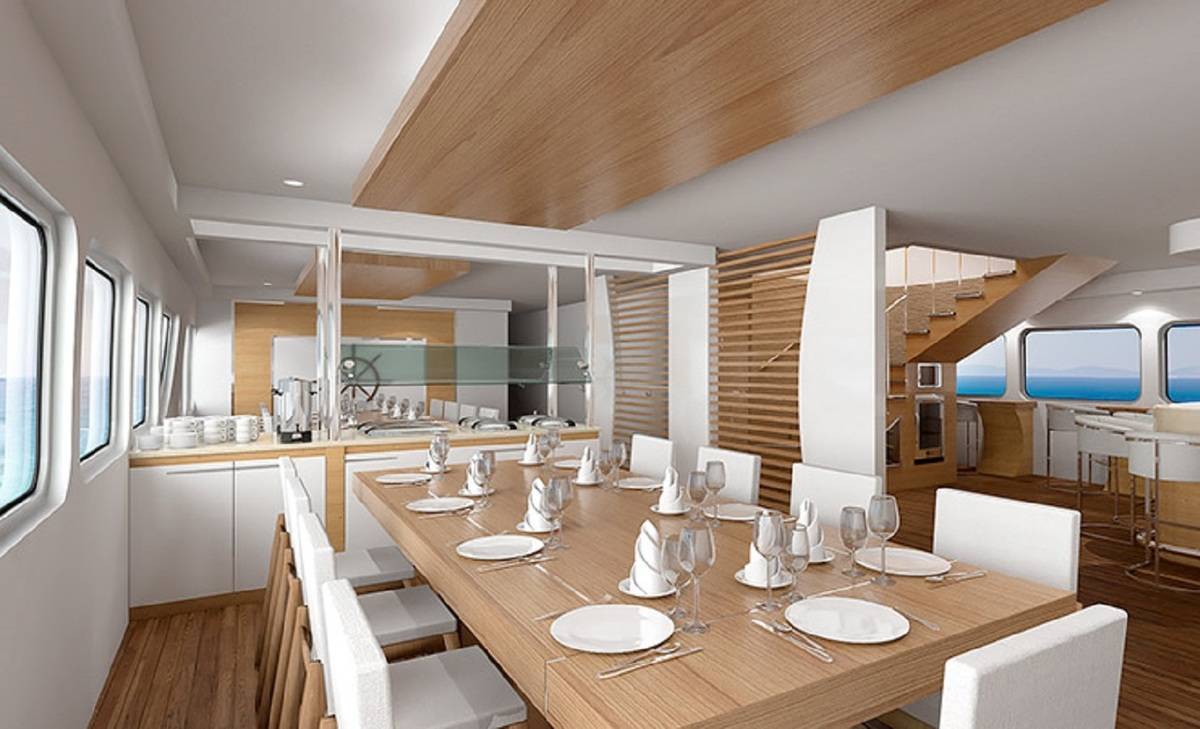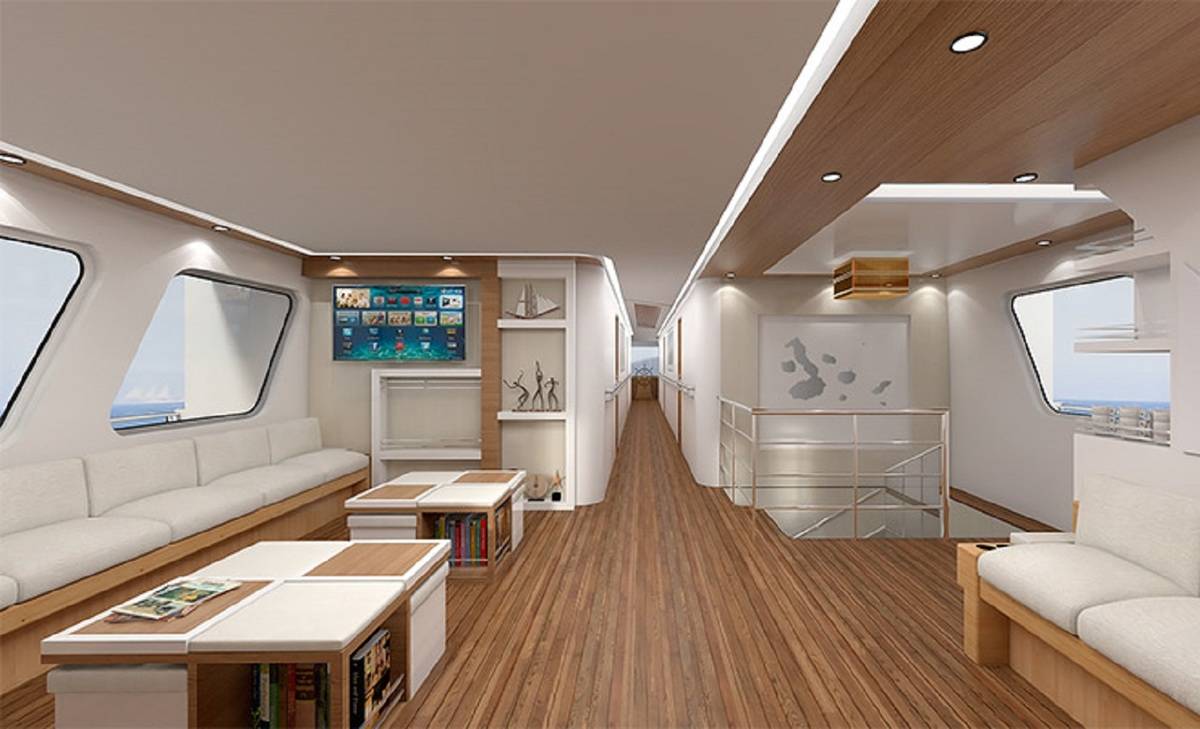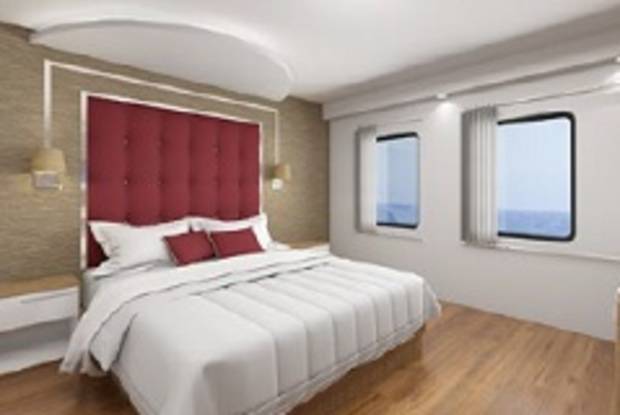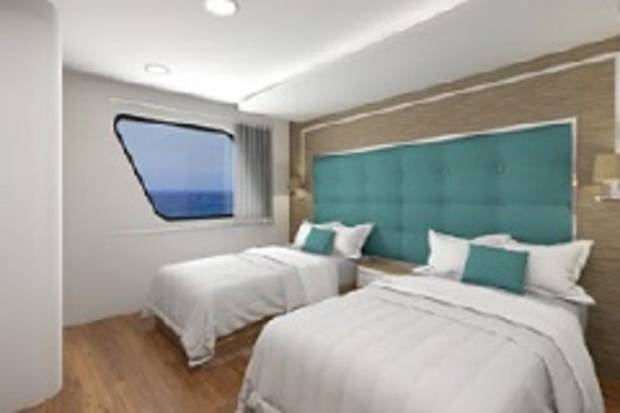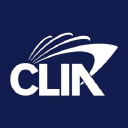Santa Cruz & Santiago Galapagos Islands
8 Days - Grand Queen Beatriz
Starting in San Cristobal Island, your 8 day cruise will visit La Galapaguera where you will be able to see giant tortoises in their natural habitat and learn about their origin! Continue to Bartolome and hike to a lookout point for one of the most photographed sites in the Galapagos - the Pinnacle Rock. Encounter friendly sea lions and marine iguanas in Puerto Egas and end your cruise on Bachas beach, where pacific green turtles are commonly spotted.

Home » 8 Day Grand Queen Beatriz: Santa Cruz & Santiago Galapagos Islands (D)
Itinerary Highlights
- Visit the breeding grounds of La Galapaguera and observe giant Galapagos tortoises in their natural habitat
- Hike to a spectacular viewpoint on Bartolome Island
- Explore the natural rock monuments at Buccaneer Cove
- Meet frigate birds and blue-footed boobies on North Seymour Island
Itinerary in Brief - Route D
- Day 1: Baltra - Santa Cruz Highlands
- Day 2: North Seymour - Mosquera
- Day 3: Black Turtle Cove - Dragon Hill
- Day 4: Rabida Island
- Day 5: Punta Carrion, Santa Cruz
- Day 6: Isabela Island
- Day 7: Punta Cormorant - Devil's Crown
- Day 8: Charles Darwin Research Centre - Baltra Airport
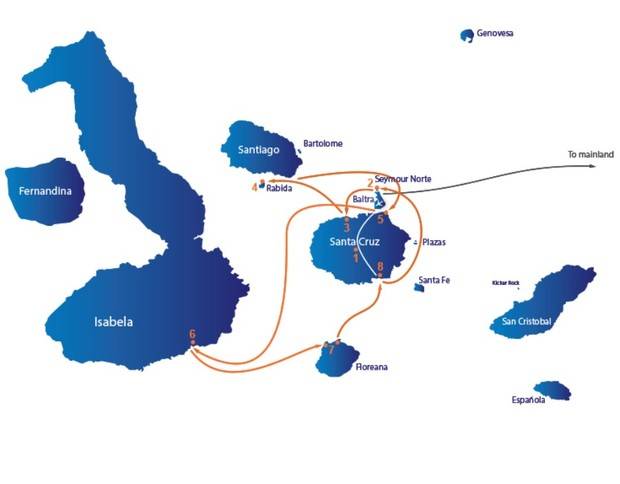
Day 1: Arrive San Cristobal - Santa Cruz
This morning you will be transferred to the airport for your flight to the Galapagos Islands. Please note the pick-up time will usually be as early as 4am as the airport is a one hour drive and you must allow for delays and check-in times. (Your tour leader will confirm this time with you at the pre-departure meeting on Day 1.)
A US$20 per person transit card is payable on departure at Quito Airport and a US$100 per person national park entry fee is payable on arrival on the islands. Please have cash on hand for these transactions as using credit cards can be time consuming.
You will be met in the arrival hall of the airport by a National Park Guide, and transferred to the catamaran ‘M.Y Grand Queen Beatriz’. Lunch will be served on the boat. This afternoon you will visit Santa Cruz, the second largest island in the Galapagos, here you'll visit the highlands.
Day 2: North Seymour - Mosquera
Today you will take a morning excursion to North Seymour. The trail on North Seymour crosses the inland through the island and then explores the rocky coast. Along the way the trail passes colonies of blue footed boobies and frigate birds.
The magnificent frigate bird, a large black bird with a long wingspan, and a hooked beak, is extremely fast and has excellent vision. Frigate birds are known for the large red pouch on their necks. During mating season the males throw back their heads, inflate the pouch (sometimes to the size of a soccer ball), and shake trying to capture the attention of female frigates.
Boobies and frigates have an interesting relationship. Sharing the same nesting area on North Seymour, blue-footed boobies nest on the ground making their nests from the twigs of the palo santos trees, while the frigate birds nest just above them in the saltbushes.
After lunch you will visit the small sandy island of Mosquera, it’s a relaxing, picturesque stop. Along the rocks and in the tide pool, sally lightfoot crabs (red lava crabs) scamper back and forth, skipping across small pools of water in search of food. These crabs with their bright red shell tops and blue under shells are stunning against the black lava.
Day 3: Black Turtle Cove - Dragon Hill
Today you will take a morning excursion to Caleta Tortuga Negra (Black Turtle Cove) - a red mangrove wetland on the north shore of Santa Cruz Island. You will paddle among the cove’s peaceful waters, for your first taste of the underwater riches of this region – it’s a wonderful place to see green turtle and is a nursery for rays and Galapagos sharks.
There is also abundant birdlife, such as the yellow warbler and lava heron. This is also a breeding area for turtles, so it is not uncommon to see them mating. Go for a walk on Cerro Dragón (Dragon Hill) this afternoon, this is one of the best places to see land iguanas in the islands. You’ll walk along the trail from the beach, and along with the land iguanas, other sightings include marine iguanas, flamingos and Sally Lightfoot crabs.
Day 4: Rabida
Rabida, also known as ‘Jervis’ is a tiny island sitting roughly five kilometers south of Santiago and is one of the most striking of the archipelago. Introduced species were eradicated in 1971, meaning that the indigenous wildlife has now been returned to a state of splendid isolation. Additionally, volcanic activity here has produced vivid, fantastical colors, not least the beaches of red sand and cliffs of scarlet.
From the shore, the trail leads through to what is one of the finest lagoons in the Galapagos for viewing flamingos. Rabida is also a wonderful place to spot nesting pelicans. Elsewhere, pintail ducks, marine iguanas and sea lions are all present. Sombrero Chino is a small islet located near the south-east coast of Santiago. It's shaped like a Chinese hat (Sombrero Chino) when seen from afar, and is geologically fascinating, with many lava tubes leading from the cone to the coast.
Day 5: Punta Carrion
Punta Carrion is located in north-eastern Santa Cruz. This is a shallow and protected cove, ideal for your first snorkel and swim in the Galapagos!
Wildlife is plentiful; keep your eyes peeled for blue-footed boobies, Galapagos herons, great blue herons and underwater swim among rays and white-tipped reef sharks.
Day 6: Las Tintoreras, Isabela Island
Today you will wake up on the South Coast of Isabela Island, the largest of the Galapagos Archipelago. Isabela was formed by five giant volcanic craters, all of which are still considered active. The island is located in one of the youngest geological areas in the world, having been formed less than 1 million years ago.
This southern coast of turquoise blue waters has the largest area of beaches in the Galapagos. You will visit Las Tintoreras, where from the viewing walkway you can look down into this narrow channel to see a colony of white-tipped reef sharks swimming and sleeping, and the occasional playful sea lion among them!
Blue-footed boobies and penguins, marine iguanas and crabs also make their home here, and the waters provide further opportunities to swim with turtles. Here you will also visit the Giant Tortoise breeding center and the Wall of Tears, constructed from lava by prisoners of the penal colony here between 1946 and 1959 as punishment. Please note there's a US$20 fee to be paid upon entering Isabela Island.
Day 7: Punta Cormorant - Devil's Crown - Post Office Bay
The island of Floreana is a highlight of any Galapagos cruise, rich in natural wonders and wildlife. You will go ashore at Punta Cormorant where the sand is made up of fine olivine crystals, a glassy volcanic mineral, giving the beach an olive-green color. It is the best place to see Galapagos sea lions.
Today is also one of your finest opportunities to see pink flamingos and other water birds wading in the lagoons, including pintails and stilts. Just offshore, the Devil’s Crown is an old eroded volcanic cone and a popular roosting site for seabirds such as boobies, pelicans and frigates. Red-billed tropicbirds can also be seen nesting in the rocky crevices.
The center of the cone is an outstanding snorkeling spot, perhaps the most remarkable in the entire archipelago, full of sea lions and colorful fish. Floreana is also home to Post Office Bay, where 18th century whalers used a barrel as an unofficial mail drop. This custom continues to this day with visitors to the Galapagos – post one of your own, or see if there are any you could deliver back home!
Day 8: Charles Darwin Research Station - Baltra Airport
As flights to the mainland from Galapagos depart mid-morning, it is an early start for our last morning on the islands. Depending on the time of our flight, our time spent on this final excursion could be limited. The small town of Puerto Ayora is the economic hub of the archipelago and is also home to the Charles Darwin Research Station. The station's visitor center and museum offer a great insight for anyone interested in the archipelago's natural and human history, and keen to learn more about conservation efforts to preserve the unique ecosystems of the Galapagos. It also offers our best chance for close-up encounters with giant tortoises, and we can see many newborn and young giant turtles - part of the breeding program to reintroduce them to their natural habitat.
This is your final excursion before you return to the airport in Baltra for your flight back to mainland Ecuador.
Cabin Details
Standard Cabin
Approx. 20m², 2 single beds or 1 queen or king bed, private bathroom with hot water, air conditioning, reading lamps & picture windows.
Junior Balcony Suite
Approx. 20m², 2 single beds or 1 queen or king bed, private bathroom with hot water, air conditioning, reading lamps, picture windows & private balcony.
Deluxe Balcony Suite
Approx. 20m², 2 single beds or 1 queen or king bed, private bathroom with hot water, air conditioning, reading lamps, picture windows & private balcony.
Grand Queen Beatriz Deckplan

Specifications
- Year built: 2018
- Capacity: 16 passengers.
- Cabin Sizes: 24,75 Mts2
- Bath Size: 3,78 Mts2
- Balcony Size:1x4 Mts.
- Hull Type: Naval Steel
- Length: 30.20m.
- Life Boats: 2 each of them carry 15 pax
- Life Jackets: 20 life jackets type 1 and 16 for the zodiacs plus 4 for kids.
- Speed: 12 knots.
- Water equipment: 25 sets of snorkels and fins, 25 wetsuits
Whats included?
- On-board accommodation
- Transfers
- Activities/shore excursions as specified
- Naturalist guides
- All meals during the voyage
- Use of wetsuits and snorkelling equipment
What’s not included?
- International and internal airfares
- Arrival/departure taxes or reciprocity fees, visa fees where applicable
- Galapagos entrance fee US$100 per person
- Tourist control card US$20 per person
- Alcoholic beverages
- Gratuities
- Any items not mentioned as included

